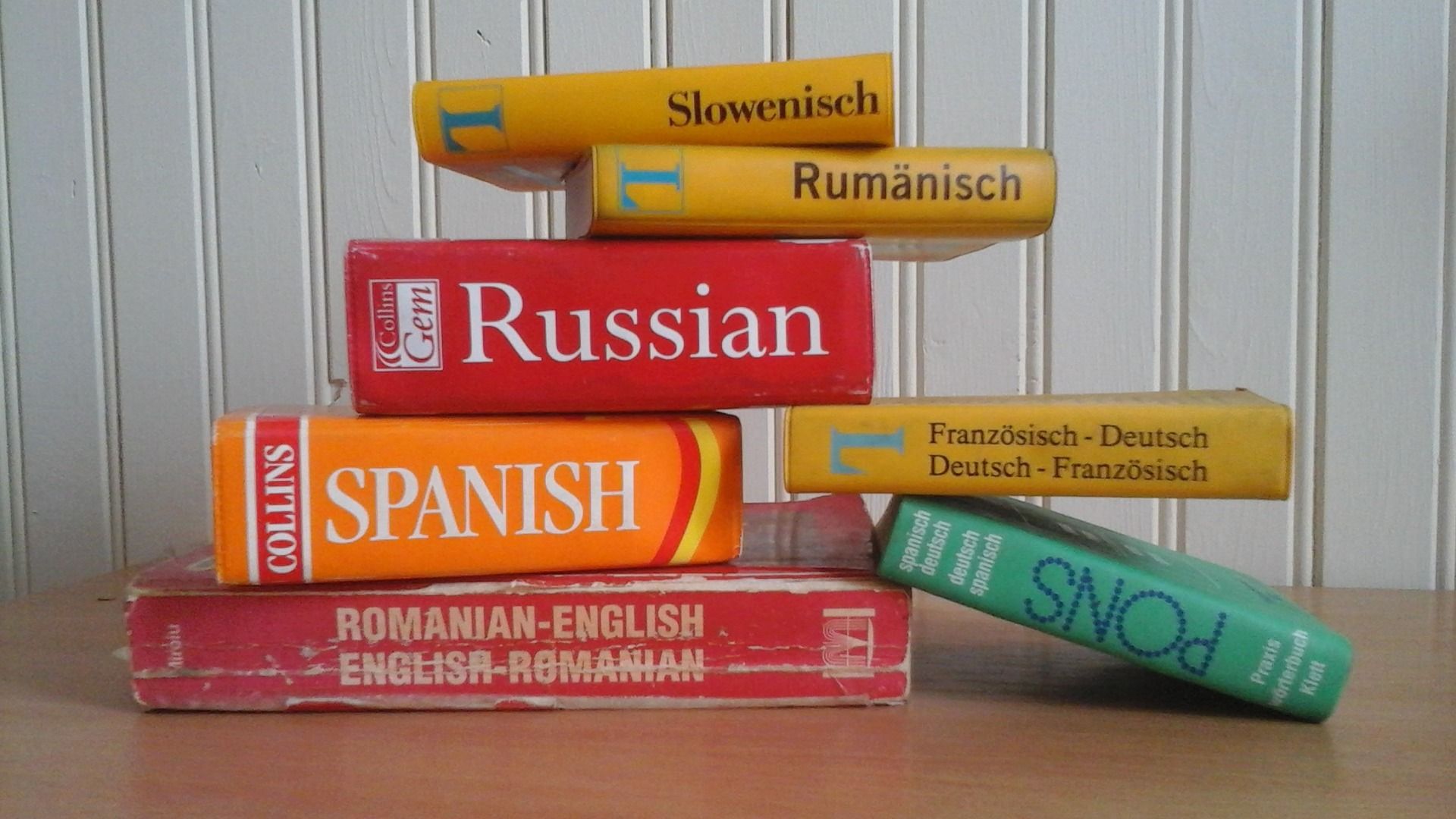What are the best language apps and websites? How do I learn vocab quickly? Do I really need to learn grammar?
Those of us learning a new language constantly ask ourselves these questions. We have a sneaking suspicion that the best way to learn a language is actually not how we learned in school or with a "learn a language" app. And that suspicion is correct. Our brains do NOT in fact learn languages the way we learn academics. We are wired to acquire language skills much more organically.
Based on decades of academic research from linguists and cognitive scientists, we now know that the most real learning comes from using the language—reading, listening, and speaking—in a specific pattern that can be far more effective than just "absorbing" language in the “real world.”
This is great news for independent and self-motivated learners like you, as it is easier than ever to find online resources to help you take control of your language learning.
Sure, Brainscape is proud to have created the world's most effective foreign language flashcards app, particularly for Learning French and Learning Spanish. But whether you're using our platform or not, we want to make sure you have a comprehensive set of resources to really build your language-learning journey according to the way you learn.
The best way to learn a new language is by adopting a healthy balance between real-world exposure, study, and practice, and using a variety of both natural and deliberate learning tools incorporated into your life and practices.
It’s not easy to identify these on your own, so let’s take a look at the ideal components of a self-study foreign language tool kit to incorporate into your life.
We cover 10 tools you need to learn a language online:
- Real-world motivation
- Vocabulary apps
- Digital dictionaries
- Vocabulary collection tools
- Conversation partners
- Solo speaking activities
- Ear-eye training activities
- Reading activities
- Listening activities
- Writing activities
We then help you put it all together in an effective language learning program:
Let’s dive in.
(Also make sure you check out our guide 'Top mental strategies for studying at home' for advice on how to learn efficiently in an environment that can sometimes be a little distracting!)
The tools to learn a language on your own

1. Real-world motivation
This one seems obvious, but it is worth calling out specifically here. Motivation is essential. You have to be motivated and to like the language if you want to succeed.
Why?
Because it’s hard and it takes years to get fluent in a language. No language-learning effort will ever “stick” if you don’t have a strong motivation (and no cute app or game offers enough points to keep you engaged for the long-haul).
You MUST have a real-life goal that is important enough to you to keep you motivated.
Perhaps you want to converse better with your Colombian husband's family. Maybe you are planning to travel or move to a foreign country. Maybe you need the language for work. Or maybe you just really need to earn an "A" in French class.
Whatever it is, remember that your motivation will have to sustain you through those periods when you say to yourself “I really don’t want to practice right now.” You’ve gotta want it. Otherwise, maybe you shouldn't learn a language after all (and that's ok).
1.1. Techniques to cultivate motivation
- Develop a clear vision and goals. Part of staying motivated is to clearly see what you’re working towards. Without a clear vision for where you’re going, it’ll be hard to stay motivated to get there. As a first step, develop a vision for yourself (e.g. I want to have conversational language skills in 6 months) and set goals for how to get there.
- Make language study a habit. Building your language learning into your routine will help you stay motivated to actually study. Develop the habit to study by doing it every day or attaching it to another activity that you do, such as making dinner or going for a run, so that it doesn't feel like "work".
- Study every day, but only a little at a time. It's best to start with 15 minutes a day and working your way up on an ideal path to proficiency. Brainscape makes this easy by allowing you to just study in short rounds of 10 cards each, which are easy to squeeze these into short breaks in your day. The app uses spaced repetition to figure out what you need to study, so you never have to manually decide what to study next.
- Keep track of your progress. One of the best ways to stay motivated to learn a language is to see how far you’ve come. Take tests regularly to see your level increase. Or, record yourself speaking and then review your previous recordings. Seeing yourself improve will help you keep going.
[See our complete guide: How to get motivation to study when you feel like procrastinating]
At the end of the day, regular work over a long period must be done. There are no shortcuts. If you aren’t ready to commit or don’t have strong enough motivation, then maybe you should spend your time on a skill you're more likely to need in life. Your progress is in your hands and you have to decide whether language-learning is really for you.
2. A vocabulary and grammar app
You need to spend a lot of time learning vocab and grammar. Sorry! They are the heart of any language and a co-requisite to more interactive real-world exercises.
Some dogmatic language-learning enthusiasts will tell you that you actually shouldn't make heavy use of vocab and grammar drills because they are not "natural" and we are programmed to learn languages more "organically" and "without translation".
After decades of research, linguists have found that learning vocab and grammar rules do help people speak more accurately. It’s not the only thing you need to do, but it’s still important.
This explains the huge proliferation of language learning apps like Duolingo that "gamify" vocab with matching questions and fill-in-the-blank answers. These can indeed be engaging methods for "casual" learners to improve their vocabulary and basic grammar.
If you are a more serious language-learner, though, these learn a language apps aren't for you. We'd strongly recommend an adaptive flashcard app for vocab and grammar practice. Flashcards facilitate the important mental activities of active recall and spaced repetition to improve your learning speed, and they can be a convenient tool for when you have just a few minutes to knock out some practice on your smartphone.
2.1. Why Brainscape is the best flashcard app for foreign languages
Brainscape is a flexible, adaptive flashcards app that helps you learn vocab and grammar twice as quickly as you would doing traditional exercises. You also remember the content more deeply and for a longer time.
Not only does Brainscape offer convenient online and mobile flashcard-creation tools (with audio) and an online library of user-generated flashcards for every language on the planet, but we have spent years building our own "certified" curricula—starting with French and Spanish—using a groundbreaking new method that uses brain science to help you learn a language online faster.
The following are some benefits of using Brainscape to practice your vocab, grammar, pronunciation, and listening skills:
- You learn incrementally. Each flashcard in Brainscape's certified curricula only conveys one new word or grammatical concept, even if it's in the context of a sentence that contains lots of other words (which had already been studied previously).
This conforms to Krashen's "i+1" input hypothesis and the theory of the zone of proximal development, where the learner always reviews concepts that are just slightly more advanced than their current level. - You can customize it. It's easy to add flashcards for new words that you learn and mix them into a customized study deck. Brainscape lets you easily keep track of all your new words and even share them with friends.
- You actively produce answers. Brainscape flashcards force you to use active recall; rather than simply making you choose from potential multiple-choice answers, a flashcard makes you think of the correct phrase in your head, just like you'd have to if you were trying to communicate with someone on the streets of a foreign country.
- You have a natural learning progression. If you're using one of Brainscape's certified foreign language programs, you'll see that each contain over 12,000 digital flashcards and are deliberately ordered from the "most critical" concepts (e.g. thanks, money, bathroom, boyfriend, etc.) to the "most mundane" (e.g. to swerve).
This is based on our very extensive analysis of language corpora to determine the concepts most likely to be used in conversation or common written material. If (heaven forbid) you quit at any time, you'll know that you've at least learned or reviewed the most useful concepts - Studying is adapted to you. Brainscape's flashcard study system uses the most advanced spaced repetition system (SRS) that repeats each flashcard in the optimal interval of time for your level of confidence.
For cards where you rate your confidence a "1" (low confidence), you might see it again within the next two minutes. For cards where you rate yourself a "5" (perfect confidence), you might not see it again for months or years. This ongoing personalized study stream will always ensure that you spend your time on your weaknesses while not wasting time on stuff you already know well. - You can learn anywhere, at any time. Brainscape is not just a mobile flashcard app but is also the best online flashcards tool that can be used in any browser ('cause sometimes you'd rather sit at your favorite coffee shop or library and study for hours!). No matter what device you're studying on, all your progress is kept in sync in the cloud, so you can always pick up where you left off.
- You can easily search for information. Use the Brainscape mobile app's Search feature to locate any flashcard you've seen before, by typing the word or phrase you're seeking. The best part is that you can then rate your confidence in that word you found (on a scale of 1-5) so that it appears in the optimal place in your ongoing personalized study stream.
- You can dive into your own analytics. One of my favorite management phrases is "You can't manage it if you can't measure it." The same is very true for language learning. Brainscape's metrics-driven learning pathway gives you multiple levels of visibility into your strengths and weaknesses so that you can either deep-dive on a certain concept, or just include those concepts in your ongoing study mix.
[Check out Brainscape's Language-Learning Flashcards]
Whatever study method you're using, we are confident that you'll find frequent daily vocab and grammar drills to become a key part of what drives your ongoing progress with your conversation partner and other real-world practice exercises.
3. A digital dictionary

As you partake in natural conversations and media consumption in your new foreign language, you’ll naturally run into words and phrases that you don’t recognize (and that—gasp!—may not have already been included in Brainscape's awesome existing curriculum).
You'll, therefore, want to make sure you have the right flexible web and mobile dictionary where you can find any form of a word and not just the root or infinitive form.
Although most people use dictionaries to find the meaning of vocabulary, they are also a useful tool for pronunciation, spelling, and writing. It also is the first (but not the only) step towards integrating a new word into your vocabulary.
3.1. Digital dictionary tools
- Linguee. Linguee is both a dictionary and a phrase translator tool. It lets you see tons of examples of each phrase being used in context, helping you to internalize the true versatility of the language.
- Google Translate. Google translate is one of the biggest translators on the net and benefits from thousands of people contributing to verify translations.
- Word Reference. Word Reference combines a dictionary tool with online forums and a verb conjugator tool.
- Reverso. Reverso uses AI to create natural-sounding translations and provide authentic definitions.
4. A way to collect new words and phrases

Now that you’ve looked up your new word, you need a way to record it. Smart language learners are diligent about keeping a notebook or note-taking app on them at all times and are constantly logging their newly acquired phrases so that they can review them again later.
4.1. Word collection tools
- A paper journal. The easiest way to collect new phrases and words is in a notebook. Just make sure you take it with you wherever you decide to study.
- Brainscape. You can easily whip out your phone and make a new flashcard for any new phrase you encounter, and that flashcard will show up in your ongoing adaptive studies using Brainscape's spaced repetition system. Simple and effective.
- Make your own vocabulary app. If you’re up for a challenge, you can even create your own language app quite easily with just a Google account.
As you sit with your conversation partner or wander through the foreign streets of France or Spain, you’ll find yourself learning lots of new words as you go. It will become imperative to be able to look up their definitions and have a designated space to store those new learnings.
5. Conversation partner

The best way to learn a language, is to use it. That means you should be speaking the foreign language the whole time you are learning—even when you still suck at it. A conversation partner is critical to maintaining that mental progress checkpoint and correcting you on your phonetics.
Not to mention, it adds more motivation to study. Studies show that people accomplish more when they feel like they’re working in a team. You’re accountable for trying, you feel supported, and you get instantaneous feedback.
While the ideal is finding a native-speaking conversation partner, you don’t need one. At least not at first. Even just another fellow language learner could be useful to practice with. You simply need an excuse to actually speak the language.
5.1. Language partner options
- A friend or co-worker. This is the easiest if you’re lucky enough to know someone who speaks your target language. Set up a regular coffee date, and chat away.
- Language exchange sites. There are now a ton of language exchange websites and they're some of the best ways to learn a language online. Some options include My Language Exchange, Tandem, Conversation Exchange, Speaky, HiNative, and Polyglot Club. You can also find people on CraigsList and Reddit.
- Find a tutor. If you’re interested in getting a proper tutor, there are tons of online options for that as well such as Verbling, Superprof, Cambly, Italki, and Preply.
- Conversation clubs. You can also find meet-ups and conversation clubs in your area through websites like Meetup or by searching for language cafes. You’ll be surprised how many other people are as motivated as you to master new languages.
- Online dating. Single? Try setting your favorite dating app to be in a country that speaks your target language. You can do that with Tinder, Bumble, and OKCupid among many others. You’ll be chatting with locals in no time. While it may not be the best strategy to find everlasting love, it’s a pretty good strategy to find native-speakers who might want to chat with you.
5.2. Conversation tips
Wherever you find your conversation partner, there are a few tactics to make the most of your real-life conversation.
- Drive as much of the conversation as possible. Rather than expecting them to ask you questions or prescribe exercises, you should come prepared for each session with a list of concepts you’re most confused about (especially slang). Controlling your own learning will keep you perpetually within the zone of proximal development and get maximum results.
In fact, if you've been using Brainscape to study in between meetings, it may be helpful to use the "Bookmark" feature to select concepts you would like to practice with your tutor or conversation partner. This can be particularly useful if you are developing a queue of difficult or confusing words or grammatical constructs that you'd like to dig in on. - Don’t be afraid to make mistakes. It’s easy to become over-focused on perfection. But when it comes to learning a language, making mistakes is a sign that you’re trying hard and committed to improving. In fact, we have to make mistakes to improve; it’s a necessary part of learning. Over time, phrases, words, and grammar will become natural when you begin to notice how they are used and mistakes will correct themselves.
- Welcome feedback and note it down. Corrections while speaking are quickly forgotten and can take-away from the experience of a natural conversation. The best practice is to collect a list of phrases and words that you struggled with afterward and note it down. You can do this easily with Brainscape’s flashcards.
6. Solo speaking activities
If you can’t find a conversation partner even with all the online resources, don’t fret: there are ways you can practice speaking with just yourself. These tips are also great if you simply want to practice outside of your regular conversation appointment.
6.1. Solo speaking activity options
- Talk to yourself out loud. It sounds weird, but it actually helps. Just imagine yourself in a situation, like at the bakery or checking into a hotel, and then go through both sides of the conversation in your target language, talking out loud. “May I please order a coffee?” “Certainly. Would you like milk?” “Cream, please.” And so on. Try it in the shower if you are nervous about talking to yourself in public.
- Record yourself. This is a great way to see your progress over the long term. Record yourself reading or having a conversation (most smartphones come with a voice recording app built-in). Then play it back months later to see how much you’ve improved.
- Shadowing. Shadowing is an activity where you essentially repeat an audio text slightly after you hear it (like a shadow). This is a very effective way to practice pronunciation and also pick up on the rhythm of your language. You can do this with podcasts, the radio, or videos (see the next few sections for ideas about where to find these).
- Reading out loud. This is another great option for practicing pronunciation and fluidity. Just take a text and practice saying the words out loud as you’re reading.
7. Ear-eye training activities

Another essential tool for learning a language are the activities that train your ears and eyes to sync up. We need to be able to understand how a word sounds that is still foreign to us. This is incredibly effective for learning a language and perhaps the quickest way to learn a language of all foreign language study exercises.
In our view, listening and reading your target language at the same time will improve your capability to do listening activities and reading activities by themselves. The rationale is that, before you do much reading, you want to develop the right voice to play in your head. You want to be able to hear the correct pronunciation as you go. Also, listening without a visual guide can be really difficult for beginners.
When I was learning French, I remember clearly sitting in a cafe for a few hours listening to an audiobook while also reading it. It was the single most useful language learning activity that I did.
Why is it so effective? Because there is a strong connection between the number of words you hear and the number that make their way into your vocabulary. Learning a language requires a massive stream of words crossing in front of your eyes and ears.
Yet this can’t just be any type of listening or viewing activity. It has to be appropriate for your skill level and interests. Watching a complicated movie as a beginner would otherwise just result in a string of gibberish flowing in one ear and out the other. (This is why you’ll never learn a language from TV).
These activities are particularly helpful when it is a movie or book that you already know well so that you can figure out certain phrases’ meanings by their familiar context.
This sheer volume of spoken words—heard alongside their written counterparts—will help you “refine your ear” and better absorb new words in the future. At first, it doesn't even matter if you know what these words mean. You can’t fully learn to comprehend a stream of conversation if you haven’t yet been trained to hear when one word ends and the next begins.
Really, you can do this with most of the reading and listening activities that we’ll list in the next few sections, you just need a way to “play” the text. But the best is if you can find audio of a native-speaker together with exactly the same text that they are reading. Here are some options for doing that.
7.1. Ear-eye training activities
- Brainscape flashcards. Our French and Spanish curricula actually pair an audio file with text, allowing you to read a sentence and hear it pronounced at the same time. This is especially useful for beginners.
- Read with a native person. If you have access to a native person, this is our favorite. For example, if your partner is Chilean, try reading a book together in Spanish. You can follow along with the words while they pronounce them.
- Audiobooks. If you’re not lucky enough to have a friend or family member that can read along with you, the next best option could be to find an audiobook online and then buy the hard copy of the book. Then, read along with the book while you listen to the audio.
- Watch films with subtitles. For example, watch a documentary in French about a familiar topic and make sure that the closed-captioning turned on (also in French). Sometimes subtitles don’t match films exactly, but we find that documentaries tend to have text that matches the audio very closely.
- Listen to songs with their lyrics. This is a great one if you’re really into music. Lyrics Playground is a great place to find international song lyrics.
- Podcasts. Some podcasts come with transcripts, especially those that are aimed at teaching people foreign languages. For example, both the Inner French podcast and the Leonardo English podcast have transcripts that you can follow along with. Look for others in your target language.
8. Reading activities

Now that you’ve spent some time listening to the text as you read it, you’re ready to branch out into reading by itself. Your brain will now be more likely to be pronouncing words correctly "in your head" even if you don't yet know what they mean.
Reading is an essential skill and usually one of the first ways we’re exposed to a foreign language. Aside from conversation with native speakers, reading is the best way to expose yourself to the large stream of words that are required to truly internalize your fluency—especially if you remember to look up all the new unfamiliar phrases in your dictionary app, and then make flashcards for those phrases in Brainscape.
Once you’ve learned some basic vocabulary and grammar rules, you’ll be ready to start incorporating real-world reading activities into your learning rotation.
8.1. Reading activity options
- Social media. One of the easiest ways to build reading into your routine is to engage with social media in your target language. You can follow Twitter celebrities in your target language, or on Instagram, or Facebook.
- Change your phone’s language. You can change the language of your iOS or Android phone or device to be in another language. This will give you tons of practice with everyday vocab. Or, change the interface language of Facebook and Instagram.
- News. The news is a great way to get exposed to a new language while staying up-to-date on current events. Check out MIT library’s repository of non-English language newspapers.
- Articles. There are a ton of places to find great articles online. One of our favorites is Medium. Just search for non-English terms like “Ciencias” for science articles in Spanish.
- Books and magazines. Get ebooks in your target language easily at the Kobo store or Amazon. Other sources include Project Gutenberg, eBooks, iTunes, Google Play or even your local library. Or perhaps you subscribe to a local version of your favorite popular magazine, like Men's Health en Español.
- Your environment. Your physical environment helps you learn as well. Pick up a menu in your target language, practice reading street signs, subways cards, and so on. Or, if you’re not in the actual country of the language you’re learning, write vocab or phrases on sticky notes for different parts of the house in the target language. You’ll be learning just by wandering around your home!
9. Listening activities

In addition to reading, try incorporating some real native speech into your practice. Pure listening is more difficult than the ear-eye training activities mentioned in tool #7 since we are now talking about listening without necessarily having the printed text to follow along with.
Some people confuse listening with hearing. While passively hearing is great for exposure, your listening exercises should encourage you to get actively involved. This means staying alert to new words and phrases, deciphering sounds and pronunciations, and actively checking your understanding.
I recommend beginning with easier material and advancing slowly as you become more comfortable. I’ve included a sample progression you might find useful. Remember, you can usually make listening easier by slowing down the audio (most listening and watching platforms allow you to do this).
9.1. Listening activity options
- Podcasts and Radio. I love listening to podcasts and radio shows from around the world as a way to learn a new language. You can listen anywhere, and, if it’s too difficult, you can always slow down the audio so it’s easier to understand. Find podcasts and radio shows from all over the world in a variety of languages on TuneIn.
- Documentaries. These tend to be spoken more slowly and clearly, without much slang. Many documentaries may even have closed captioning that is an exact verbatim match to the words being spoken aloud. You can find these on YouTube. For example, try the “Documentaire en Français” channel if you’re learning French.
- News. Listening to the news in other languages is another great option for clear, slow language. And it’ll keep you up-to-date with current affairs. For lower levels, try the following: Decipher Chinese (Chinese), News in Levels (English), 20 Minutes (French), Nachrichtenleicht (German), News in Slow Italian (Italian), NHK News Web Easy (Japanese),VOA Korea (Korean),News in Slow Russian (Russian), or Hola qué pasa (Spanish).
For more advanced levels, check out videos from news sites on YouTube. Here’s some of the best ones: CCTV (Chinese),BBC News (English),France Info (French),DW Deutsch (German),Euronews (Italian), FNN (Japanese), TV Chosun (Korean), RT News (Russian),BBC Mundo (Spanish). Google News also lets you connect with news in a number of languages. - Animated movies (e.g. Disney/Pixar). These are dubbed for children in multiple dialects and therefore tend to be standard and easy to understand (though not as easy as documentaries). You can find lots of these on your favorite streaming app, like Netflix.
I recommend starting by watching movies you already know well in your native language, then progressing to movies you've never seen before. What a great excuse to exercise your guilty pleasure of finally watching Shrek 3! Try without subtitles, or with subtitles in your target language.

- Dubbed popular movies or shows. As with animated films, these dubbings are typically recorded by professional voice actors whose clarity transcends dialects and is spoken into a nice clear studio mic, rather than a lapel mic while they're in action. I'll never forget my evening watching L'Arme Fatale ("Lethal Weapon") from my hotel room in Martinique and laughing at the disconnect between Mel Gibson's lips and the French words I heard. But it was great fun practice!
Here’s how to change your language on Netflix to get your favorite shows dubbed in your target language. - Local movies and TV shows. In any language, locally produced content contains the most colloquial dialog, spoken most quickly, and with the least amount of sound editing for clarity.
Many novice language learners make the mistake of starting this step too early, and they are easily discouraged when all the mumbling slang passes right over their heads. Don't worry if this is hard for a while. Even native speakers sometimes have trouble understanding the local hillbillies or thugs of their culture who may be appearing in newscasts or being portrayed in niche TV shows!
Filmatique has a ton of great international film content. And here’s a list of some of the best international films and shows to watch right now. - Songs. Songs can be one of the best ways to train your ears in a foreign language because they are fun, repetitive, and can easily be looked up online to sing along to the lyrics. An extra bonus is that they can become a great topic of conversation with your new native-speaking friends. They'll be so impressed when you can sing along!
How can you find new music in a new language? Start finding what’s popular in other countries using the charts on Spotify. Then find a couple of artists you like and search for similar artists.
Just remember to make the most of the songs for learning by looking up the lyrics, finding new words that you learn in your dictionary, and making new flashcards in Brainscape for your new words. - Audiobooks. Finally, try audiobooks. They’re a great way to get exposed to a new language and culture. And they can be more convenient than reading when you’re doing other things, like driving to work. Audible has a foreign language section of audiobooks. You can also find them on Amazon Audible, Librivox, Spotify, Audiobooks.com, and Hoopla.
10. Writing activities

We’ve put this last because it’s not for everyone. Most people learning a foreign language aren’t really trying to get good at writing in it. If you’re not trying to go into academia or get a white-collar job using your new language, you may choose not to place too much focus on writing exercises.
Still, these can really help you get a good sense of grammar. And since lots of our daily communication is still in writing (with text messages and emails), it’s good to get comfortable composing written texts in your target language.
With that in mind, here are some easy writing activity options.
10.1. Writing activity options
Write letters or postcards. Practice your writing by finding a good ol’ fashioned pen pal. Try InterPals, Penpaland, PenPal World, or Global Penfriends. And, of course, if snail mail isn’t really your pace, feel free to make it an email exchange.
- Keep a journal. A journal is one of the easiest ways to make writing in another language a part of your daily routine. Talk about what happened to you that day, how you’re feeling, or your dreams for the future. Try to use the new words you’ve learned recently in your daily entry.
- Post on social media. You are probably on social media anyways. Why not make a post in your foreign language?
- Join WhatsApp groups. There are tons of WhatsApp groups for language learners. Here’s one for French and for Spanish. You can use Google to find one in your language.
The best way to learn a language online: putting it all together to build your language program

Phew. That was some list of learning techniques! Each one of them—especially the use of Brainscape‘s spaced repetition flashcards—is rooted in sound cognitive science and has been proven by millions of language learners around the world.
Now you have all the tools you need to learn a language. You just have to put your toolkit together to build a language program.
We have specific guides for how to learn French more efficiently and how to learn Spanish more efficiently, but here’s a step-by-step guide to building a language-learning program that you can use for any language.
Step 1: Make a plan
The first thing to do is to set goals for yourself and make a plan to get there.
- Set a goal. Maybe you want to be able to order ramen in Japanese at a Japanese restaurant. Maybe you want to be able to go on a date in Peru. Maybe you want to meet the prerequisite language level to study in France. Think about what your goal is, and write it down.
- Set aside study time. You should study every day. It doesn’t have to be a lot, but it needs to be every day. Try for at least 15 minutes. You can do it by building it into your routine: practice Spanish flashcards while you eat breakfast, listen to a podcast while you’re making dinner, or read while you’re taking the train to work. Just make sure you’re doing a little every day.
Step 2: Choose your tools

We’ve listed a ton of resources in the previous section. Now you need to choose which ones you’ll use.
- Choose an activity for each skill. Speaking, reading, listening, and writing are the four language skills. Choose at least one activity to practice each skill.
- Choose a vocabulary activity. Brainscape’s flashcards are perfect for this, but you can choose any activity that will help you build your vocabulary.
- Experiment. Try a few of them until you find ones you like.
Step 3: Adapt your tools to your level
We know from the cognitive science of language learning that you need to adapt your activities to stay in the zone of proximal development. They need to be challenging, but not too much. All of the tools above can be made easier or harder.
Here’s a quick-start guide for each level.
Complete beginners
You’re a complete beginner if you are starting from nothing: you don’t have more than a hundred or so words, you’re not familiar with everyday expressions, and you can’t ask and answer basic questions about yourself.
At this level, your goal is to learn your first few hundred words and practice basic grammar structures. Consider these activities to help you do this:
- Vocabulary. Build your first few hundred words with Brainscape.
- Speaking. Speak to yourself and read short texts out loud.
- Reading. Read social media posts or short, easy articles.
- Listening. Start with audiobooks of children’s stories.
- Ear-eye training. Read the audiobooks at the same time as listening to them.
- Writing. Start a journal and write a few sentences each day.
Beginners
You’re a beginner if you can introduce yourself and are able to ask and answer basic questions about yourself; you can understand basic, everyday expressions; and you can interact with others in a very basic way as long as other people speak slowly and clearly.
Your goal at this level is to learn your next few hundred words and practice creating sentences in the present tense, including negatives and questions. Consider these activities to help you do this:
- Vocabulary. Build your first thousand words with Brainscape.
- Speaking. Talk with a conversation partner for a few hours every week.
- Reading. Read short news articles aimed at beginners or children’s books.
- Listening. Listen to audiobooks or the news, but slow down the audio.
- Ear-eye training. Read a book at the same time as listening to the audiobook.
- Writing. Keep up your journal. Write text messages or social media posts.
Intermediate learners
You’re an intermediate learner if you can get the main ideas from clear speakers on things that you would regularly encounter in work, school, leisure, and so on; you can respond to most situations that would arise while traveling in an area where the language is spoken, and you can produce simple language on topics that are familiar or of personal interest.
Your goal at this level is to build your vocabulary and expand your grammar so you can understand and produce sentences about the past, the future, conditionals, and so on. Consider these activities to help you do this:
- Vocabulary. Practice verb conjugation with Brainscape, including past and future tenses.
- Speaking. Continue with your language partner.
- Reading. Read books you’ve already read and short news articles.
- Listening. Listen to podcasts, news, your YouTube videos. Slow the audio down if you need to.
- Ear-eye training. Listen to podcasts or documentaries while you also read the transcripts.
- Writing. Write multi-paragraph emails or journal entries.
Advanced learners
You’re an advanced learner if you can understand a wide range of demanding, longer clauses, and recognize implicit meaning from texts; can express your ideas with a level of fluency without a lot of searching for words; and can communicate competently in social, academic, and work situations.
Your goal at this level is to polish your language, continue building your vocabulary, and get close to fluent. You’re done with the training wheels; now you’re just navigating in the “real world” enjoying your ability to consume native media: books, music, radio, and so on. Consider these activities to help you do this:
- Vocabulary. Use Brainscape flashcards to keep track of new words you learn.
- Speaking. Continue with your conversation partner.
- Reading. Read books, articles, or other native texts that interest you.
- Listening. Listen to podcasts from native speakers or the radio.
- Writing. Write articles or longer, more complicated texts.
Step 4: Review and revise your plan
Make sure you’re regularly re-evaluating your plan so that it continues to work for you. If you are finding your activities too easy, maybe you’ve improved (congrats!). Now, make them a little harder.
Or maybe you’re finding them too difficult. Or too boring. In that case, change them so that they are at the right level for you and that they stay engaging. Making time to adapt your plan to suit you will help you stay with your language learning program.
Go forth and learn your language

Learning a new language has incredible benefits, from being able to integrate into a new culture to making your brain grow. You have tons of motivations you pick from to learn a new language.
We’ve given you all the tools you need to build your language program and be successful.
Tools and methods are great but it’s your drive that will get you there in the end—you will really need to want it to progress. Effective tools and activities are great, but, in the end, you’re in charge of setting aside Netflix and opening your Brainscape app to study.
So, it's up to you to put together and stick to a learning plan using our techniques. It’s worth it: the rewards of your diligence will last a lifetime.
Start now.
Sources
Allport, F. H. (1920). The influence of the group upon association and thought. Journal of Experimental Psychology, 3(3), 159.
Brown, R., Waring, R., & Donkaewbua, S. (2008). Incidental vocabulary acquisition from reading, reading-while-listening, and listening to stories. Reading in a Foreign Language, 20(2), 136-163.
Chang, A. C., & Millett, S. (2014). The effect of extensive listening on developing L2 listening fluency: Some hard evidence. ELT journal, 68(1), 31-40.
Chang, A. C. (2011). The effect of reading while listening to audiobooks: Listening fluency and vocabulary gain. Asian Journal of English Language Teaching, 21, 43-64.
Hamada, Y. (2018). Shadowing for pronunciation development: Haptic-shadowing and IPA-shadowing. Journal of Asia TEFL, 15(1), 167-183.
Kadota, S. (2019). Shadowing as a practice in second language acquisition: Connecting inputs and outputs. Routledge.
